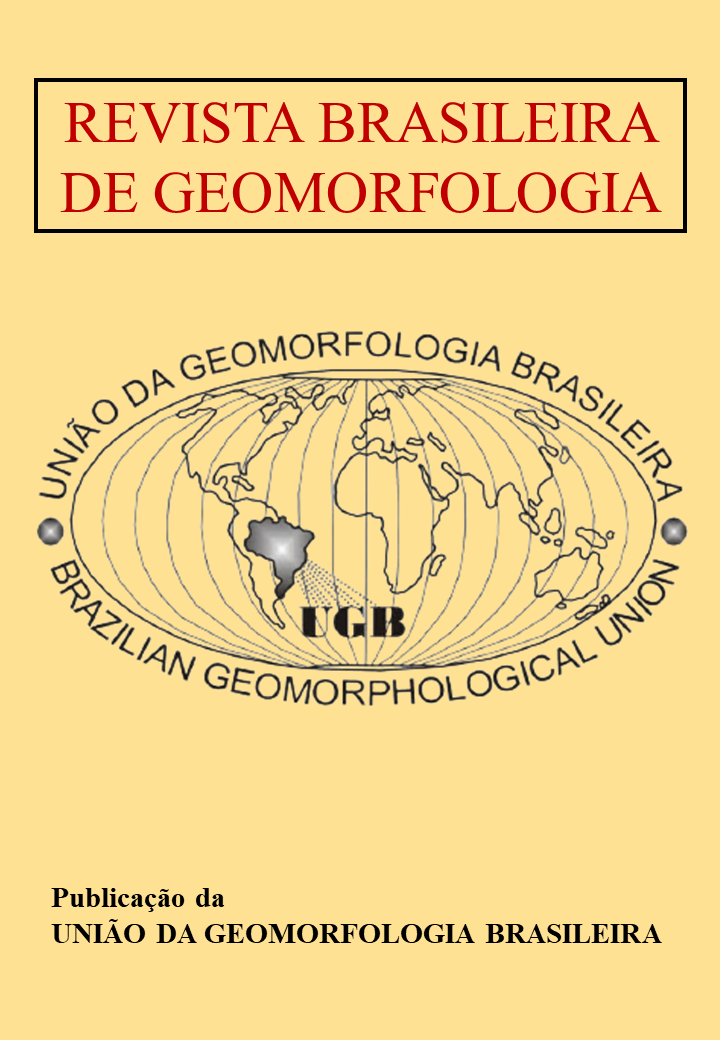Mapping, typological characterization, and geomorphometric analysis of the gullies of the Tupanciretã Formation
DOI:
https://doi.org/10.20502/rbg.v26i3.2680Palavras-chave:
Erosive processes, Water erosion, Remote mapping, GeoprocessingResumo
The Tupanciretã Formation, of sedimentary origin, has a high incidence of gullies caused by water erosion. This study sought to carry out a regional characterization of the geological and geomorphological processes that act on the formation’s gullies using satellite images and a global digital elevation model. Specific methodologies were used to map and record 351 gullies in a 1,147,750 ha area. The delineated gullies were entered in a GIS database, so the data could be manipulated using geoprocessing to assign a unitary typology to each erosion as well as to define its shape, its relationship with the drainage network, and area. The spatial distribution of the gullies in the study area was considered, and their behavior in relation to geomorphometric variables such as slope, hypsometry, terrain shape, and slope direction analyzed. The most commonly found gully form is branched, predominantly connected to the drainage network, small to medium in area, and in concave-convergent relief. Ultimately, it was possible to understand the spatial variability of occurrence as well as the Tupanciretã Fm.’s gully patterns and the conditioning factors within the area.
Downloads
Downloads
Publicado
Como Citar
Edição
Seção
Licença

Este trabalho está licenciado sob uma licença Creative Commons Attribution-NonCommercial 4.0 International License.
Autor(es) conservam os direitos de autor e concedem à revista o direito de primeira publicação, com o trabalho simultaneamente licenciado sob a Licença Creative Commons Attribution que permite a partilha do trabalho com reconhecimento da autoria e publicação inicial nesta revista.










